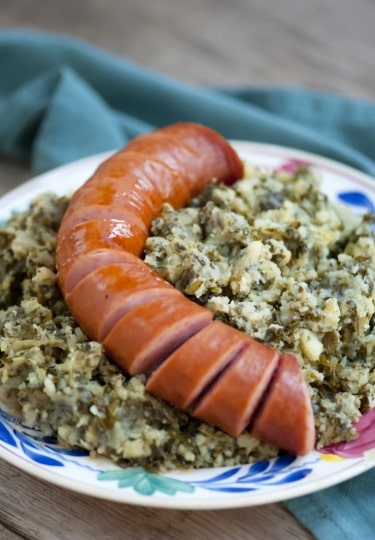People from Spain, the Netherlands, Africa, Indonesia, India, Venezuela, and Portugal comprise some of the 40-plus nationalities living in Curaçao. Each group has brought unique culinary traditions, skills, and spices, creating a vibrant cuisine.
Snack on Curaçaoan dumplings, meatballs, wafers, pancakes, peanut cookies, and raw herring. Lunch on delicious seafood, including lionfish, a delicacy, or try lizard stew, a local specialty. And don’t forget to toast each other with a cocktail made with Blue Curaçao liqueur.
Here are 22 Curaçao foods to sample.
Oliebollen
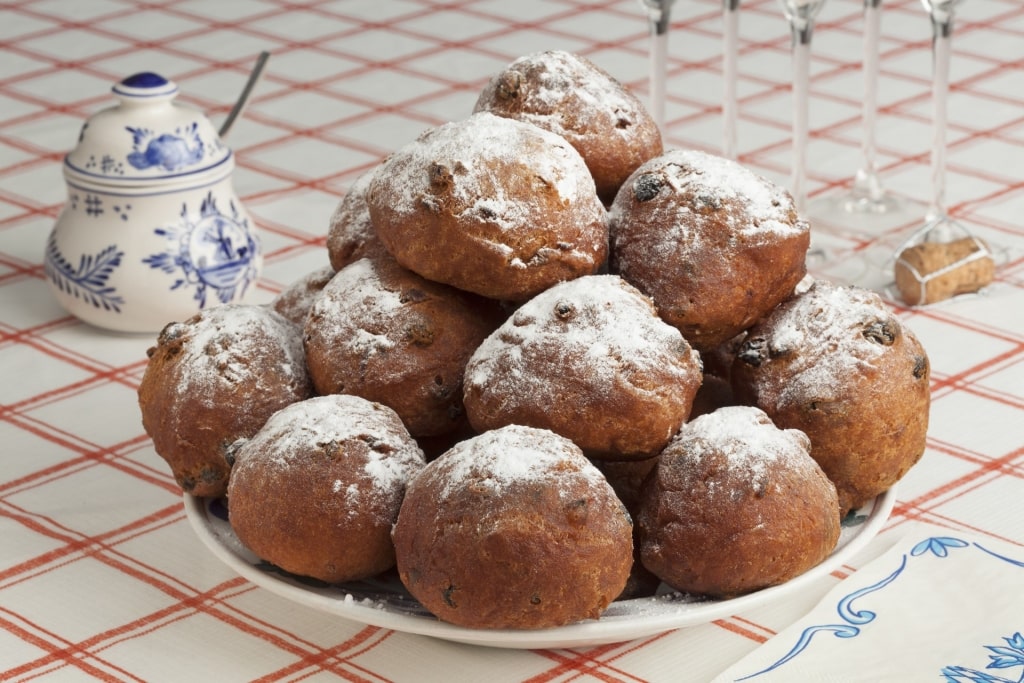
Oliebollen
Oliebollen, the Dutch term for “oil balls,” are fried dumplings. The tasty treats, topped with powdered sugar, often contain raisins or currants.
Islanders eat the sweets year-round, but the Dutch (who have been present in Curaçao since 1634) also devour them during Christmas and on New Year’s Eve.
In one rather gruesome origin theory, a belly filled with oliebollen served as protection from the pagan goddess Perchta.
Toward the end of the year, Perchta, accompanied by evil cohorts, flew about using her sword to slice open the stomachs of those who had eaten so she could steal their food. She was foiled by the oliebollen fat, which caused her blade to slide off her prey.
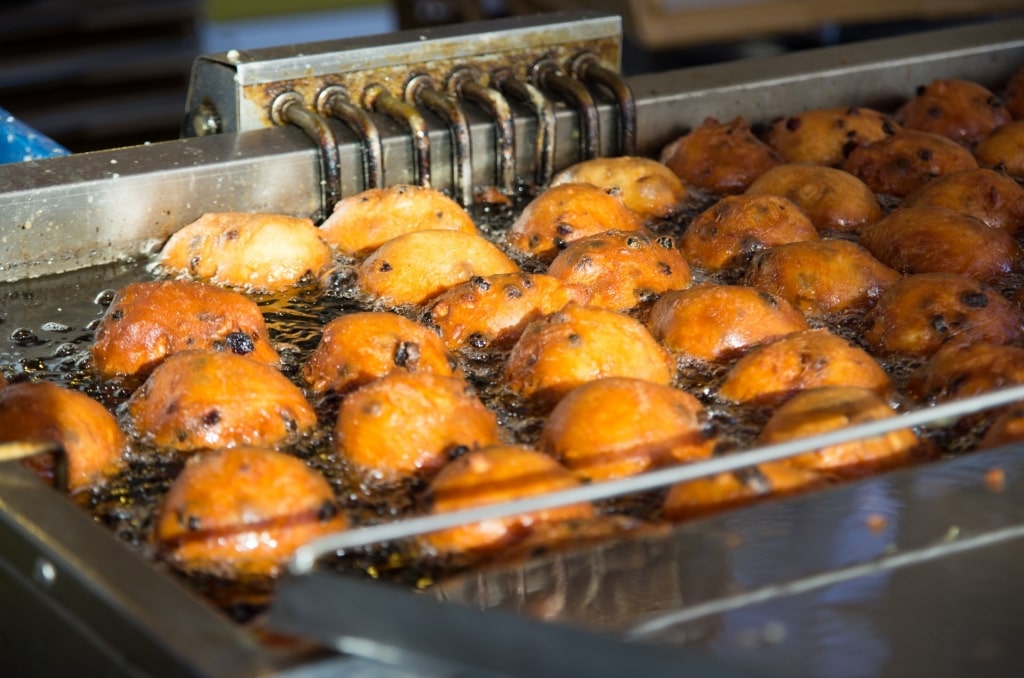
Oliebollen
Another origin story attributes the doughy delicacy to Jews who fled Portugal during the Inquisition, bringing their recipe for fried dumplings to the Netherlands. Either way, oliebollen is a delicious Curaçaoan food. Look for them in bakeries, grocery stores, and from food trucks.
Bitterballen
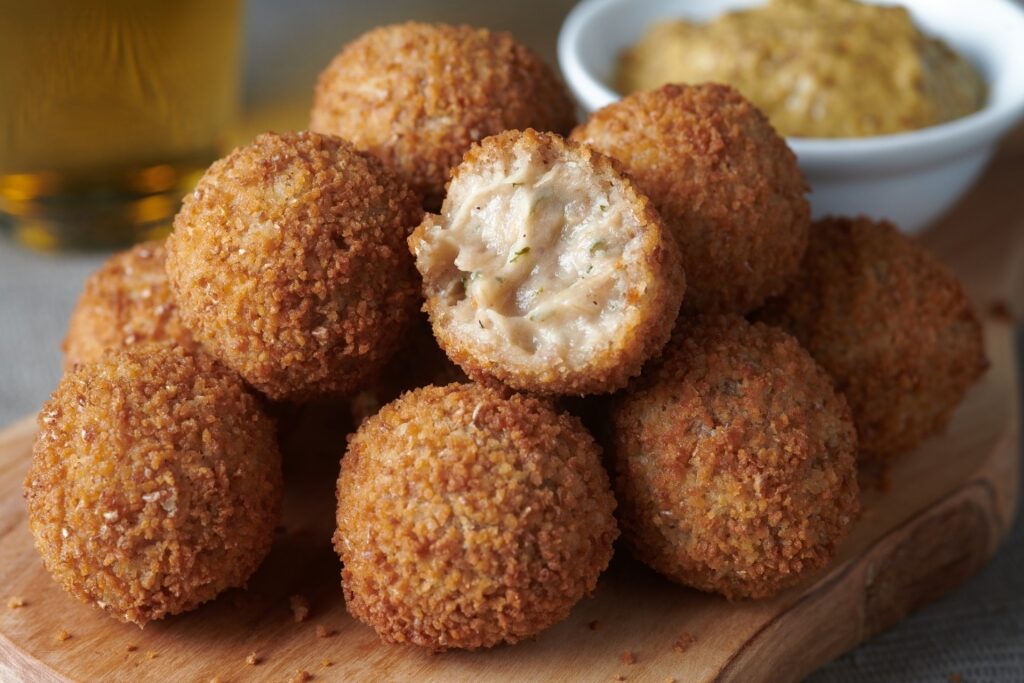
Bitterballen
Find the popular bitterballen—fried, bite-sized balls of meat with a creamy gravy filling—from street vendors such as Dutch Treat at the foot of the Queen Emma Bridge in Willemstad.
If you want to fit in like a local, order bitterballen, which means “garnish for bitters” in Dutch, from a café or bar. At Plein Café Wilhelmina, in Willemstad’s Punda, savor bitterballen with Klein Curaçao white beer and other brews.
Giambo
Curaçao’s version of gumbo, giambo, also spelled “guiambo,” displays its African and Caribbean roots.
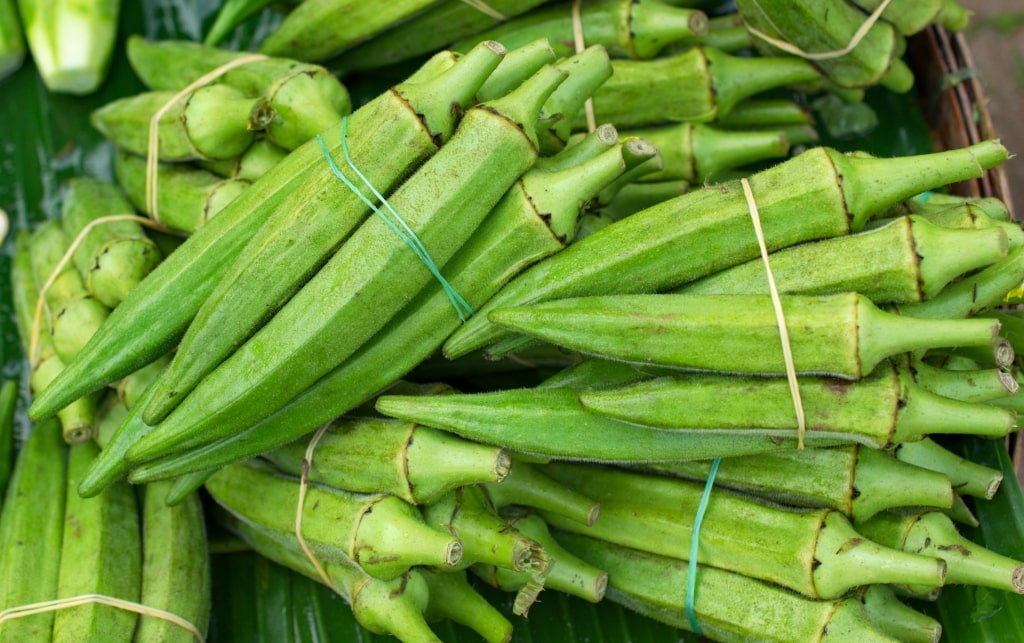
Okra
The okra base, an African staple, renders the hearty soup green and unctuous. If you can get over the texture, you’ll likely enjoy giambo’s mix of okra with island fish. Some versions use mahi mahi, oysters, shrimp, and other Caribbean seafood.
In Willemstad, order giambo at Komedor Krioyo and Plasa Bieu, also called Marshe Bieu.
Stroopwafels
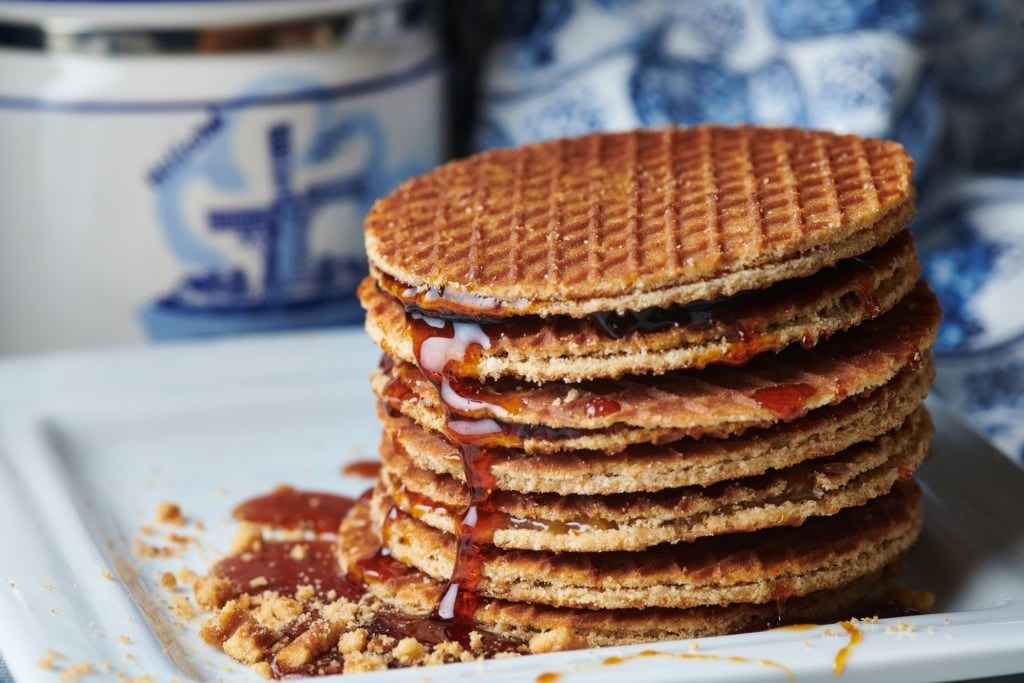
Stroopwafels
Gouda, in the Netherlands, not only gave the world the noted cheese but also Stroopwafels, thin crispy cookies filled with a thick, caramel-like syrup called “stroop” in Dutch.
In the early 19th century, as the story goes, a Gouda baker sweetened his leftover breadcrumbs with syrup and baked them to create the first iteration of the Stroopwafel.
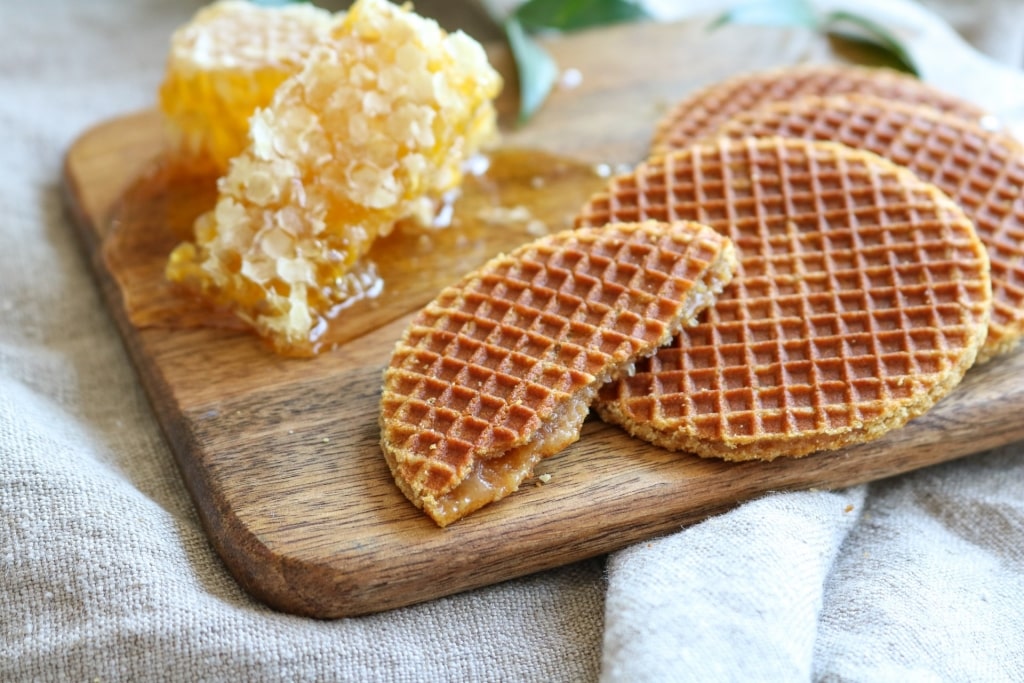
Stroopwafels
The thin wafers are baked for a minute, cut in half, and filled with the sweet, gooey mixture. To warm the filling, locals place the store-bought cookies on top of a hot cup of coffee or tea for a few minutes.
For freshly baked Stroopwafels, go to Dushi Wafels, a Willemstad food stand that usually sells them on Fridays and Saturdays. You’ll find them in most grocery stores, too.
Read: Best Things to Do in Curaçao
Karni Stoba
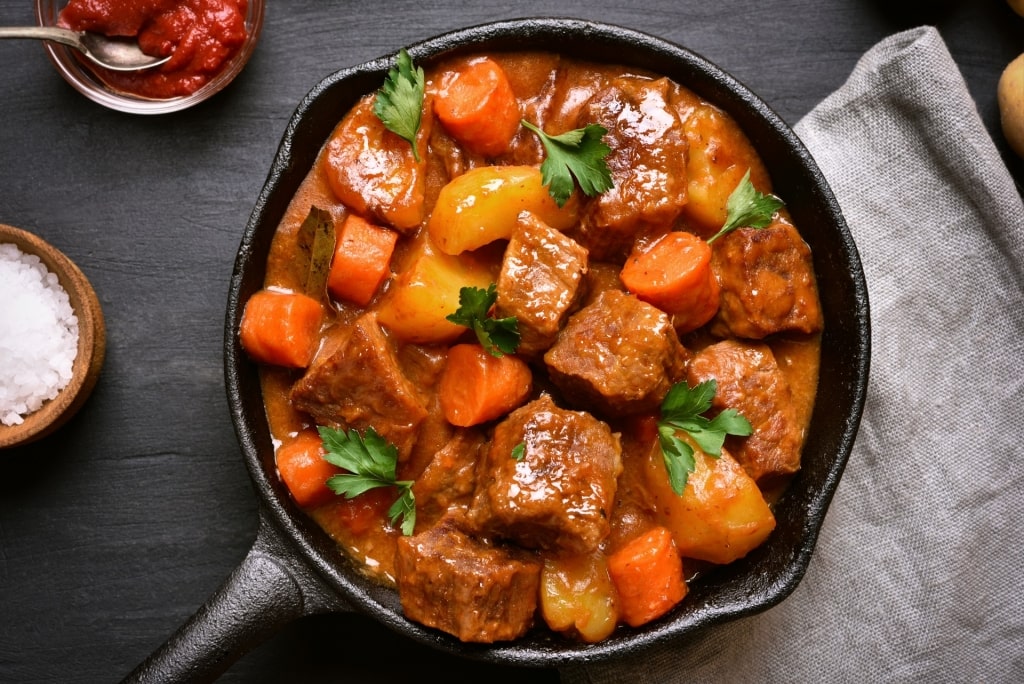
Karni stoba
A popular Curaçaoan dish, karni stoba, a meat stew, is made with beef on other islands, but Curaçaoans often substitute goat, simmering the protein with vegetables and adding papaya for a dash of sweetness.
Other ingredients may include onions, bell peppers, minced garlic, tomatoes, and curry powder.
Try the stew at Plasa Bieu, also called Marshe Bieu, a rustic food hall where locals line up for lunch on weekdays. You’re likely to find cooks ladling out karni stoba here, as well as other tasty Curaçaoan dishes.
Stamppot
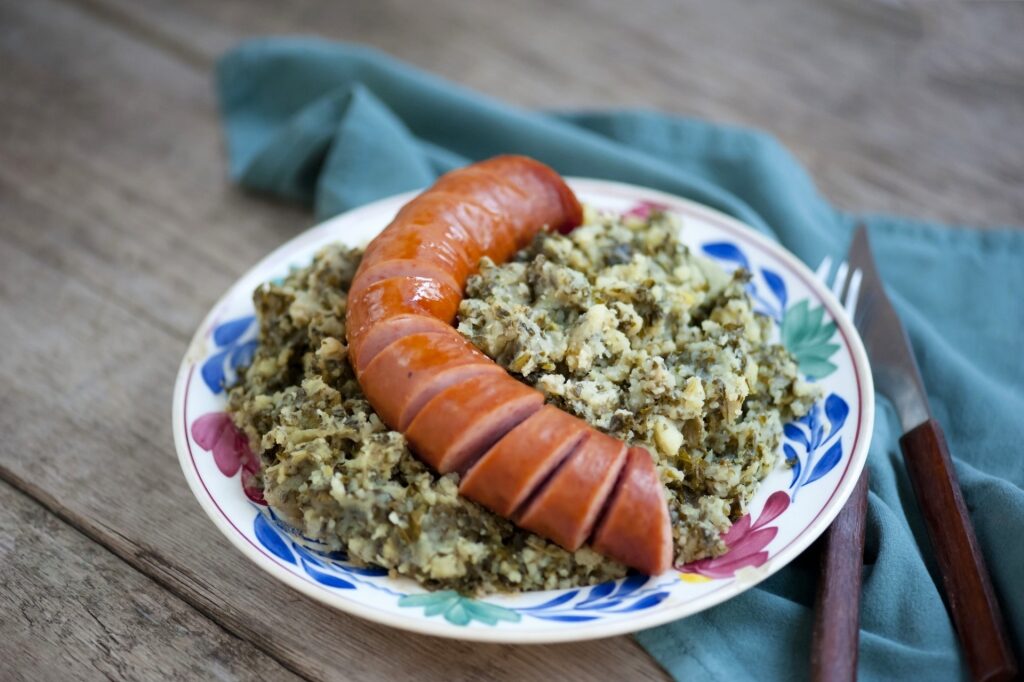
Stamppot
To create stamppot, a cook mixes mashed potatoes with sauerkraut, endives, spinach, or turnip greens. Most people pair the Dutch staple with sausages. Originally a winter comfort food, the filling dish is eaten year-round.
You might find stamppot at Bijna Thuis, Foodies, Plasa Bieu, and other Willemstadt restaurants serving local fare.
Rauwe Haring
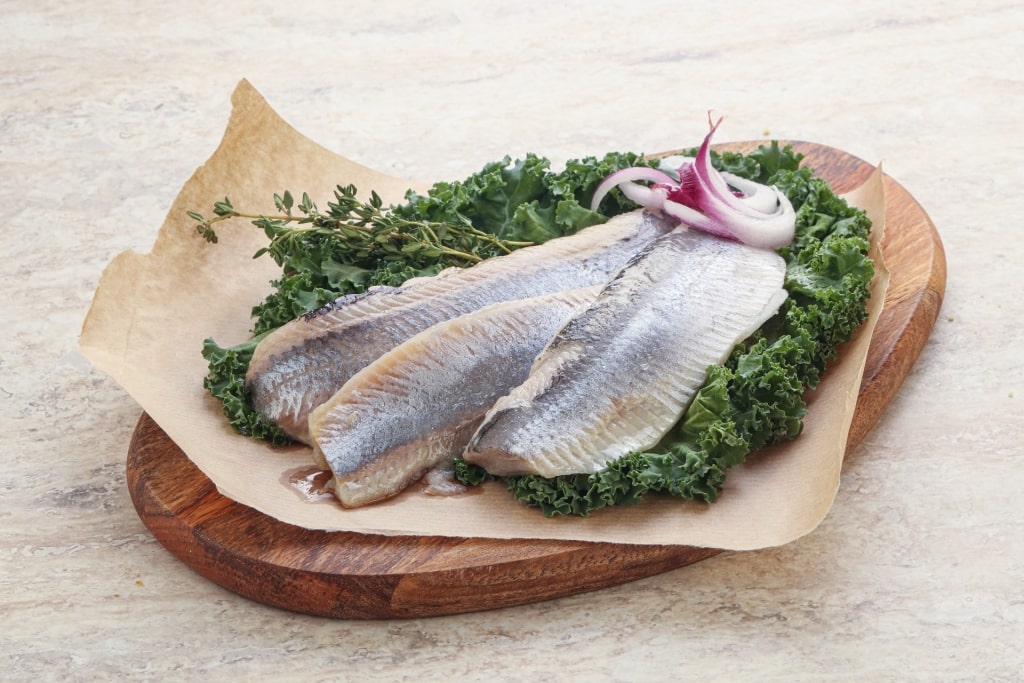
Rauwe haring
Closer to home, the Dutch have been fishing for herring for hundreds of years and the popularity of rauwe haring, or raw herring, has predictably spread to Curaçao.
After soaking in a salty brine, the fish is cleaned. To eat the Dutch delicacy like a local, pick the fish up by its tail, throw your head back, lower the fish into your mouth and bite down. Even toddlers do this.
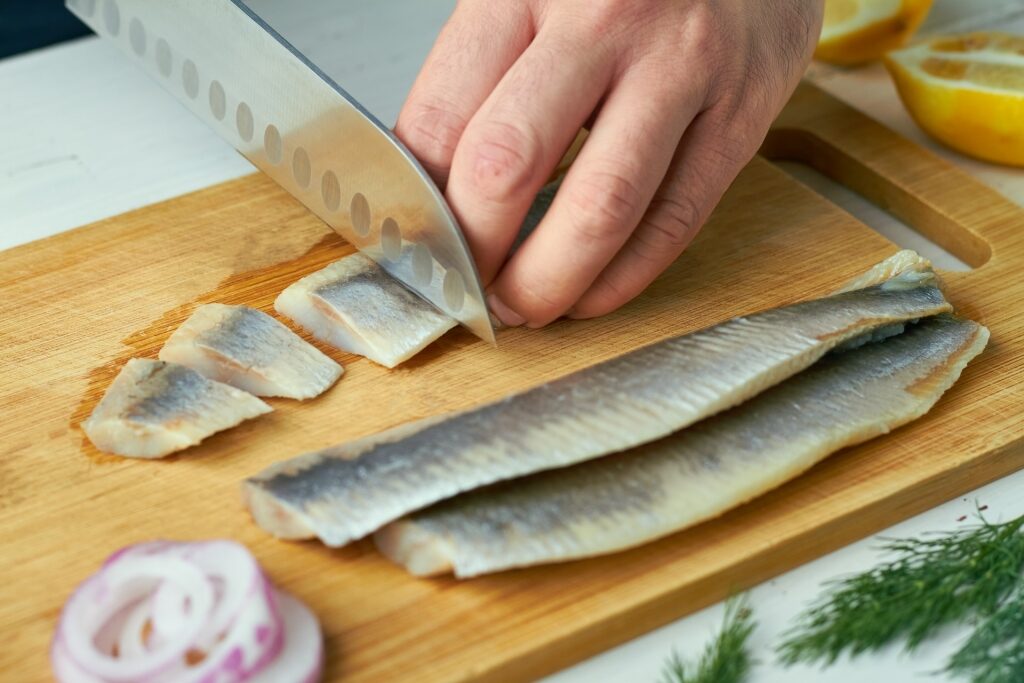
Rauwe haring
But you can also eliminate slippery fingers by eating the fish Amsterdam-style. You cut the herring into pieces, mixing the bites with onions.
Centuries ago, when Amsterdam was a poor town, families divided their herring into small portions to ensure everyone received some fish.
Keshi Yena
“Keshi yena” means “stuffed cheese” in Papiamentu, an official language in Curaçao.
The Dutch preferred the creamier, soft core of the wheels of Gouda and Edam cheese, throwing out the wax-covered shells. The slaves salvaged the rinds of cheese, added leftover vegetables and scraps of chicken or beef, then cooked the mixture.
Modern recipes add raisins, eggs, and seafood to the cheesy mix. The baked casserole comes to the table in a tasty, melty mass. Keshi yena is regarded as the island’s national dish. If you’re looking for the best food in Curaçao, you won’t go wrong here.
Kibbeling
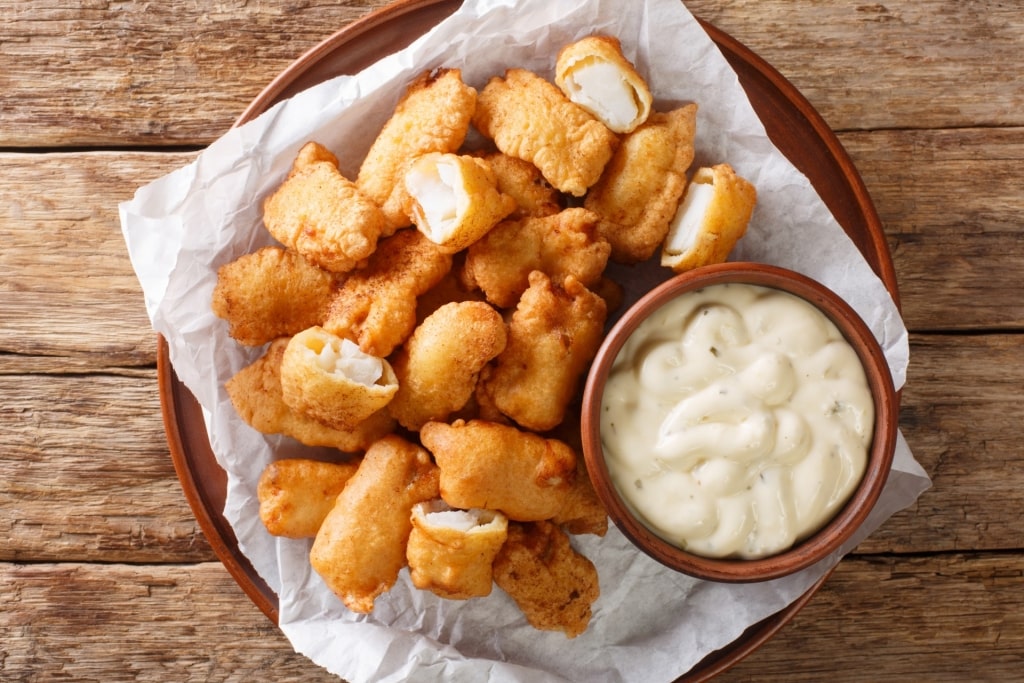
Kibbeling
The name kibbeling is derived from “kabeljauwwang,” meaning cod cheeks in Dutch.
Since no part of a fish went to waste, kibbling originally consisted of battered, spiced, and deep-fried cod cheeks. Contemporary kibbeling typically uses other parts of cod, hake, or haddock. Restaurants and vendors pair the snack with a mayonnaise-based garlic or tartar sauce.
De Kibbeling, an eatery in Willemstad, serves this popular dish, the name being a giveaway, as do many vendors and cafés.
Poffertjes
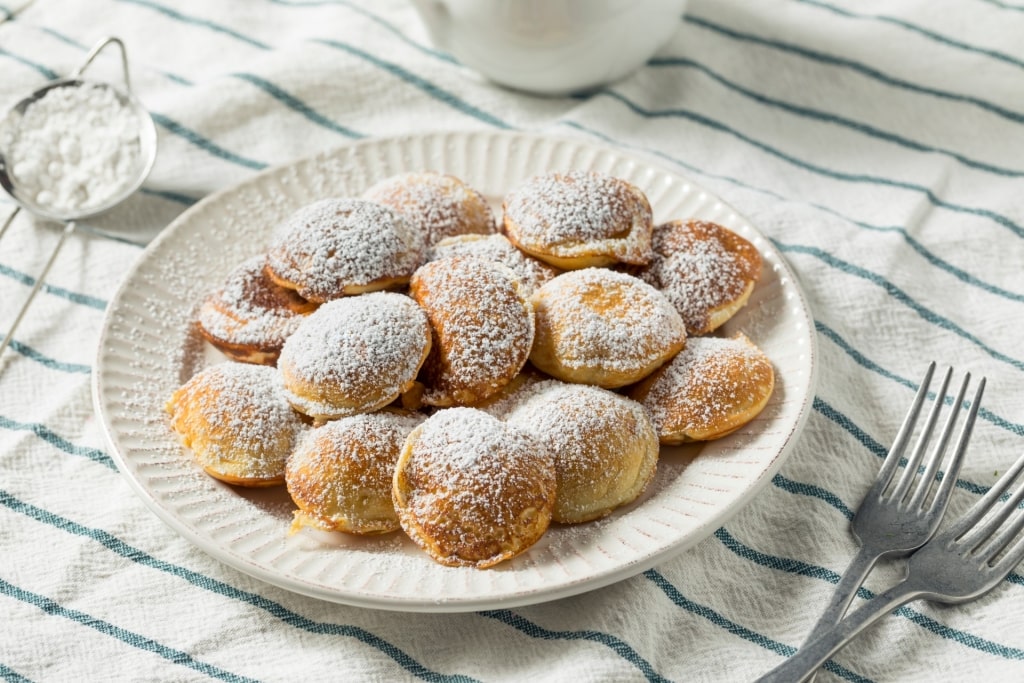
Poffertjes
The Dutch love pancakes. Locals eat hot poffertjes, puffy, mini-pancakes topped with butter and powdered sugar, for breakfast and snacks.
Legend has it that the small delights originated in a Dutch abbey that used mini-pancakes made from wheat flour for communion wafers. When the French Revolution caused a shortage of wheat flour, the Abbey substituted buckwheat flour, creating a fluffy, more popular offering.
In Willemstad, order them at Plein Café Wilhelmina or the Pancake Sensation.
Pastechi
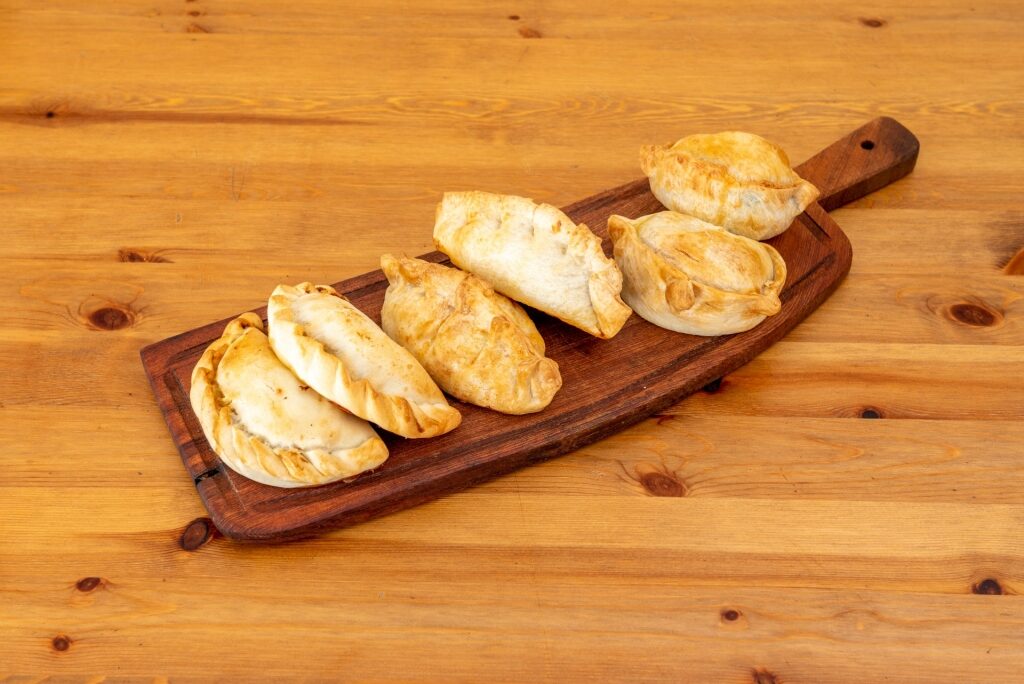
Pastechi
Pastechi satisfies Curaçaoans’ desire for a filling breakfast and a tasty snack. Cooks stuff a crescent-shaped pastry shell with meat browned with onions, peppers, raisins, and spices, and then deep fry the concoction.
Like anything good, variations abound. You can also find pastechi filled with cheese or fish. Try the delicious finger food in Willemstad at Silva Snack, at Manhattan Curacao, known for its cheeseburger pastechi, and at many island restaurants.
Ontbijtkoek
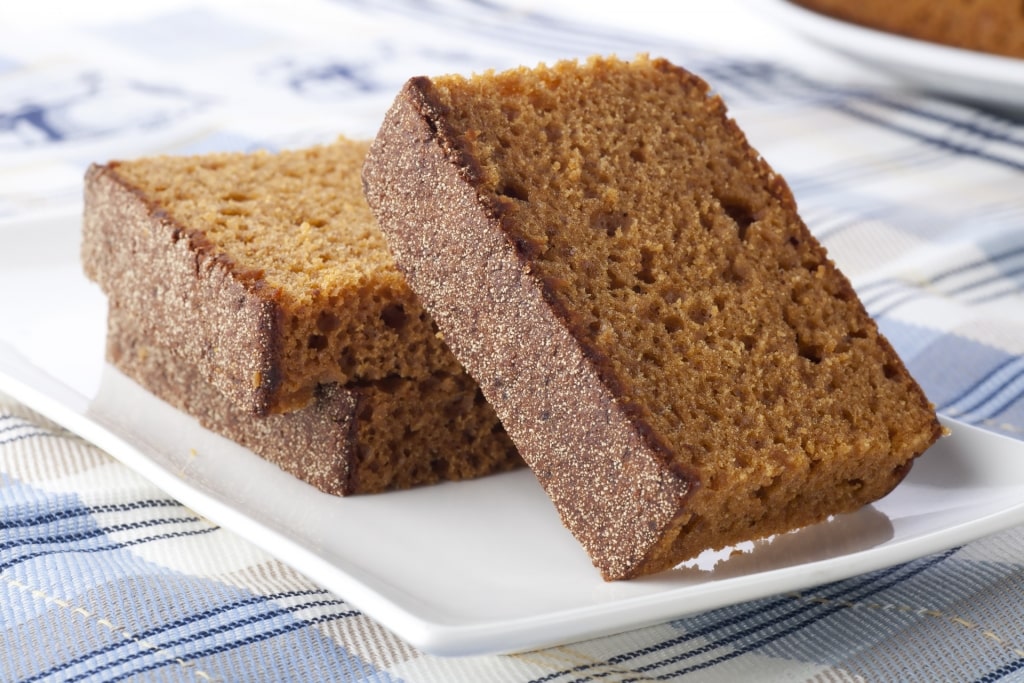
Ontbijtkoek
Ontbijtkoek translates to “breakfast cake.” It’s the Netherlands’ version of gingerbread cake. Containing cloves, ginger, and cinnamon, the spiced cake is served in the morning instead of bread and in the afternoon with tea or coffee.
Originally made with honey, ontbijtkoek dates back centuries. Soldiers carried the spice cake, a sort of long-ago energy bar, with them. You can buy ontbijtkoek made by Peijnenburg, a well-known Dutch baking company, in Curaçao’s supermarkets.
Rijsttafel and Caribbean Indonesian Fare
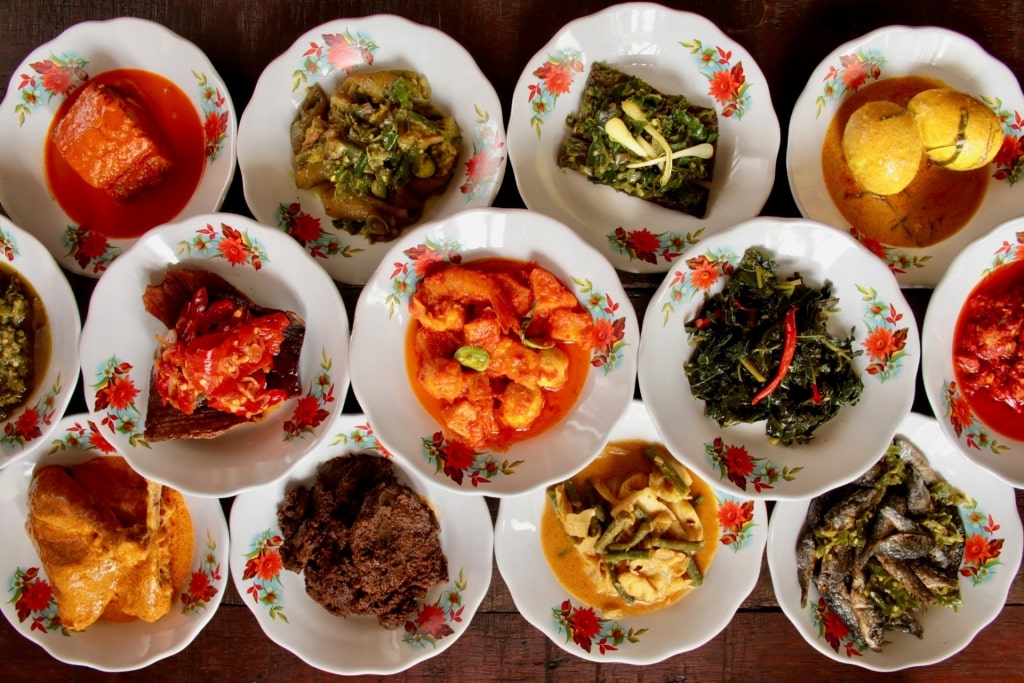
Indonesian food
The food choices seem endless at a rijsttafel, a Dutch word meaning “rice table.” Since the Netherlands dominated parts of Indonesia for centuries, the Dutch embraced many Indonesian foods and traditions.
Likely based on the multiple-dish Indonesian meal called “nasi padang,” rijsttafel toned down the spicy sauces and dishes to suit Dutch palettes.
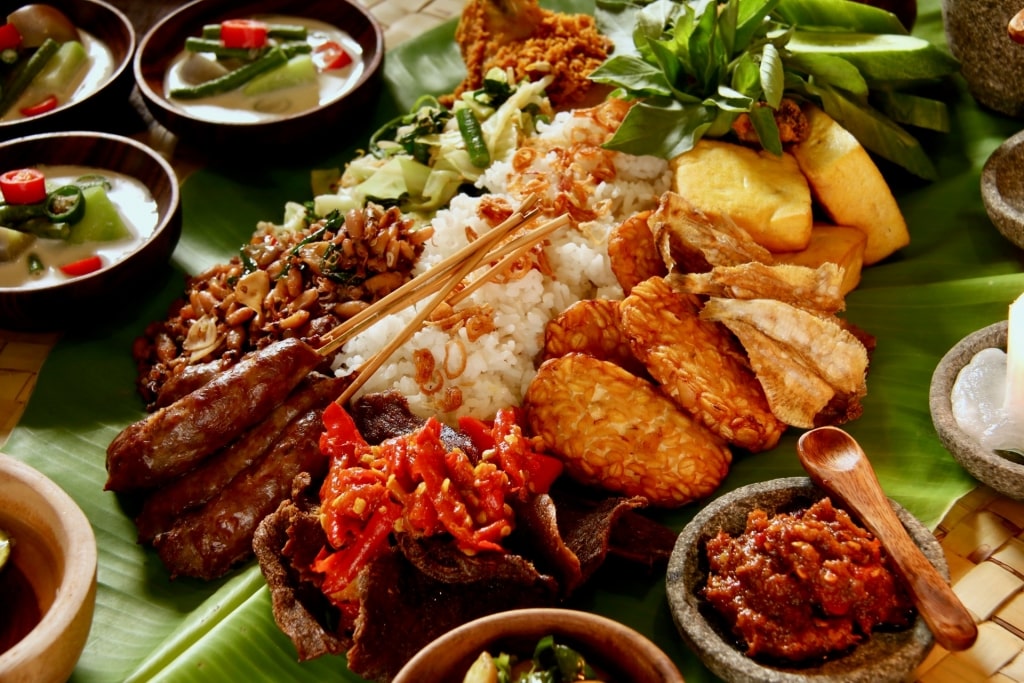
Rijsttafel
At a Dutch rijsttafel, you eat small portions of as many as 40 dishes—fish, curried meats, satays, and stir-fried items—served with rice and an array of sauces during many courses.
While finding a full rijsttafel in Curaçao for lunch is difficult, you can savor many Carib-Asian Indian dishes at Ginger in Willemstad’s Pietermaai District, a UNESCO World Heritage site.
The extensive menu features chicken satay, keshi yena, tandoori chicken, Caribbean fish cakes, Caribbean pastechi with mango sauce, and much more.
Arepa di Pampuna
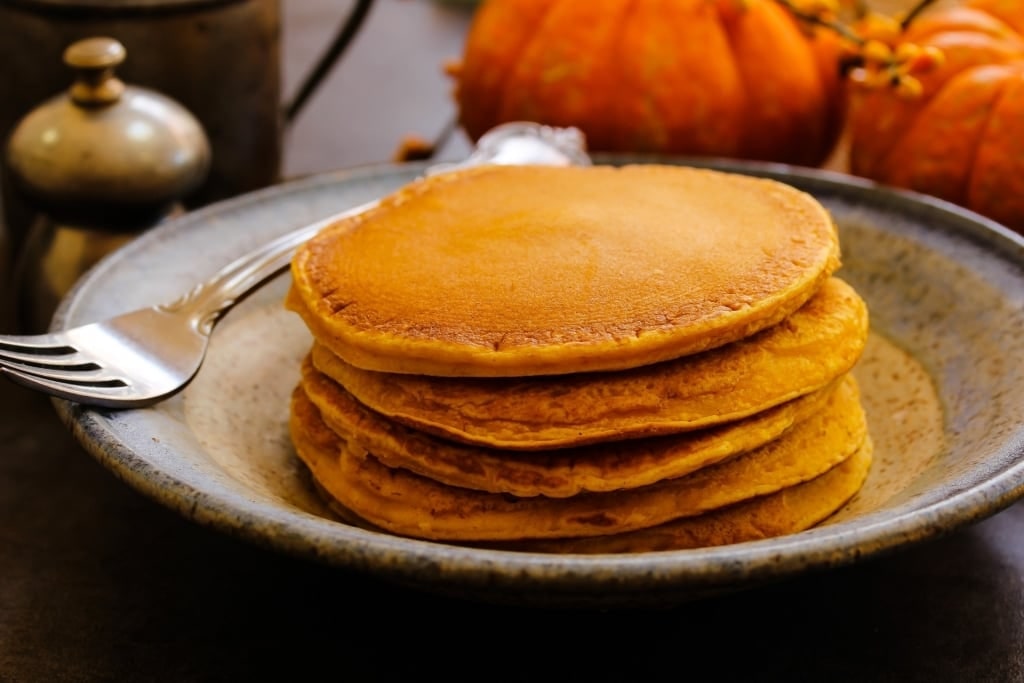
Arepa di pampuna
Arepa di pampuna, or pumpkin pancakes, are a favorite Curaçao food. The pumpkin puree makes the pancakes thicker than traditional ones.
To the pumpkin filling, cooks add cinnamon and fresh, grated nutmeg. Locals eat arepa di pampuna for breakfast and for snacks. Try them at the Pancake Sensation and at many cafés.
Lionfish
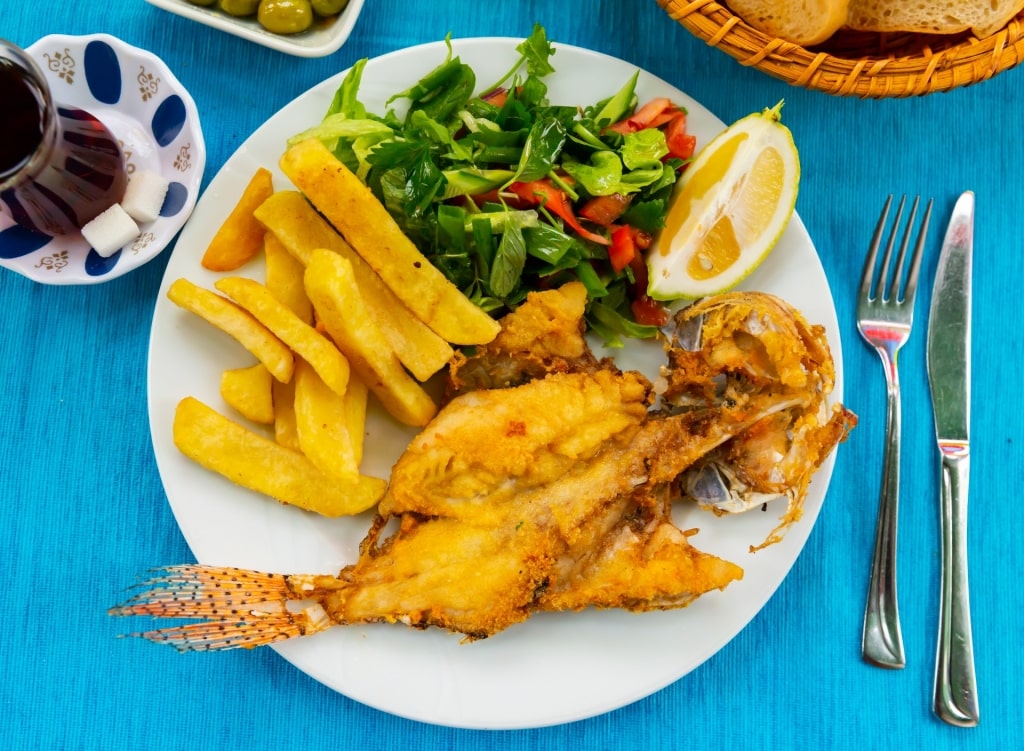
Lionfish
Striped, spiky, and venomous, lionfish is tasty. Devotees liken the white, flaky meat to a cross between cod and lobster.
To prepare lionfish, chefs cut away the 18 poisonous spines, then clean and filet the fish. Since lionfish are an invasive species in the Caribbean, eating them helps control their population. Try the dish in Willemstad at Lionfish Caribbean at Kura Hulanda Village, or at Sea Side Terrace restaurant.
Read: Best Beaches in Curaçao
Seafood
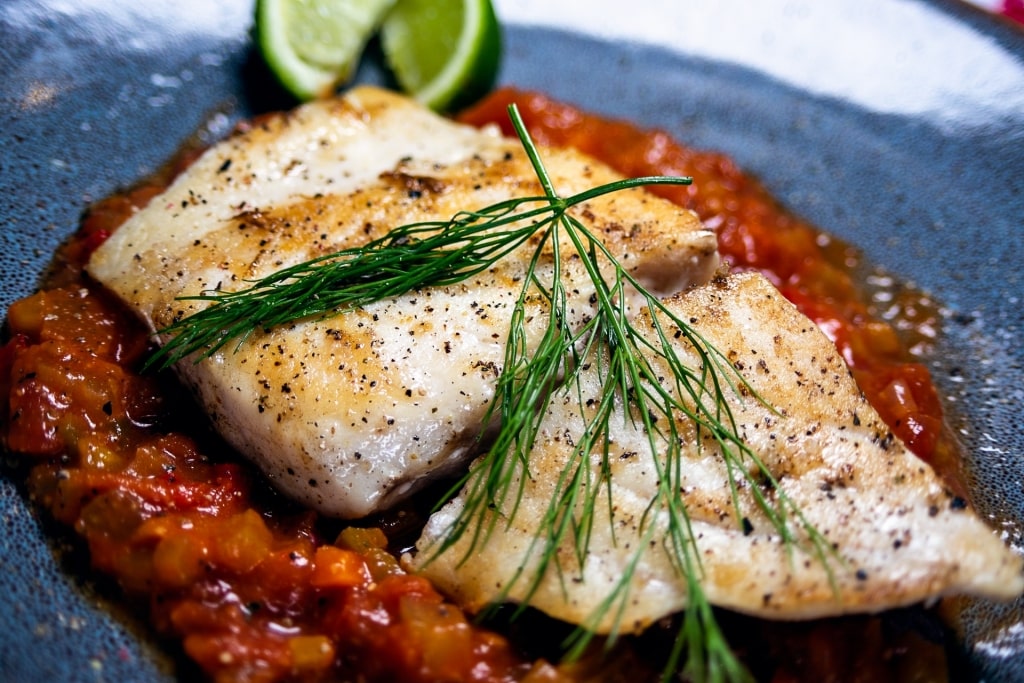
Mahi mahi
Along with tasting raw herring and lionfish, take advantage of Curacao’s bounty of fresh seafood. Many restaurants serve shrimp, conch, mahi mahi, red snapper, tuna, and other fish.
Among the great places to sample fresh catches in Willemstad are Saltwater Rif Terrace, Purunchi Koredor, and Sea Side Terrace.
Blue Curaçao

Blue Curaçao
Every dream Caribbean vacation needs a signature cocktail. Most likely, you’ll celebrate your island getaway with a concoction made with Blue Curaçao, an azure-colored liqueur that matches the Caribbean’s blue skies and waters.
Blue Curaçao, of course, was born on the island. In 1896, drugstore owners Haim Mendes Chumaceiro and Edgar Senior produced Senior’s Curaçao tonic based on a family recipe.
They quickly changed the name to the more appealing Senior’s Curaçao Liqueur. Others attribute Bols, a Dutch spirits brand, as the first to create the blue version.

Blue Curaçao
The sweet-tasting aperitif is distilled from the dried peels of the island’s Lahara oranges. Senior’s adds food coloring—blue, red, orange, or green, which doesn’t affect the taste—to the clear liquid.
You can tour Senior’s Curaçao Liqueur Distillery at Landhuis Chobolobo. Purchase bottles onsite and at island liquor stores.
Green Rum
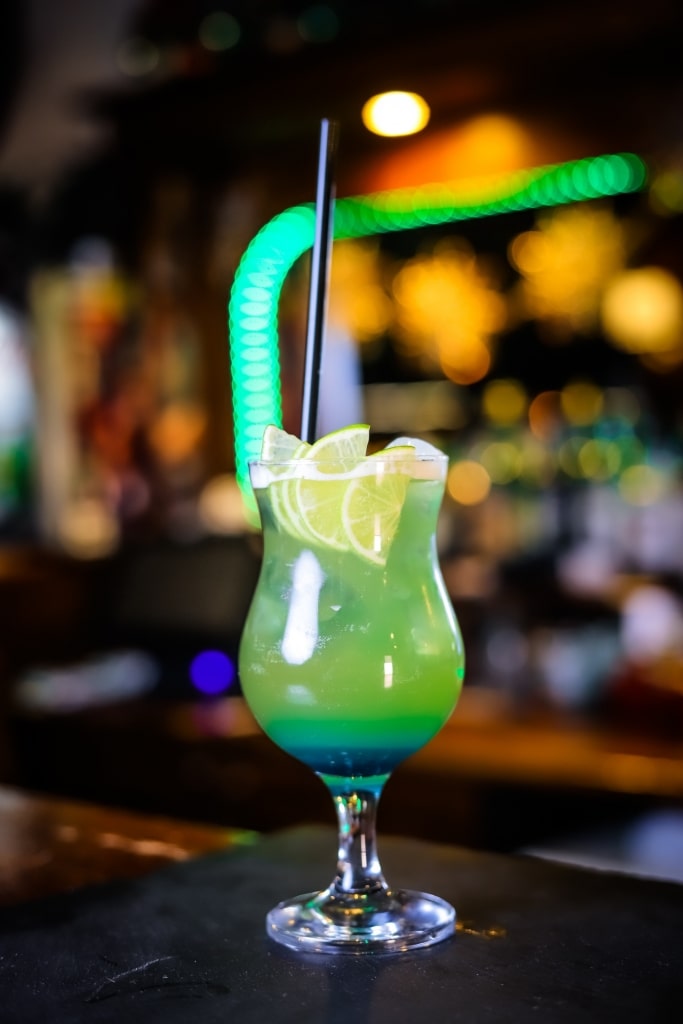
Green rum
Another island alcoholic drink is green rum, called Rom Berde, Papiamento for (what else) “green rum.”
Legend has it that Ernesto (Netto) Koster began serving his house-made concoction at his Netto Bar in Willemstad, which opened in 1954. The drink, which many think has a licorice taste, remains popular.
Read: Best Caribbean Rum Distilleries, Tours & Tastings
Awa di Lamunchi
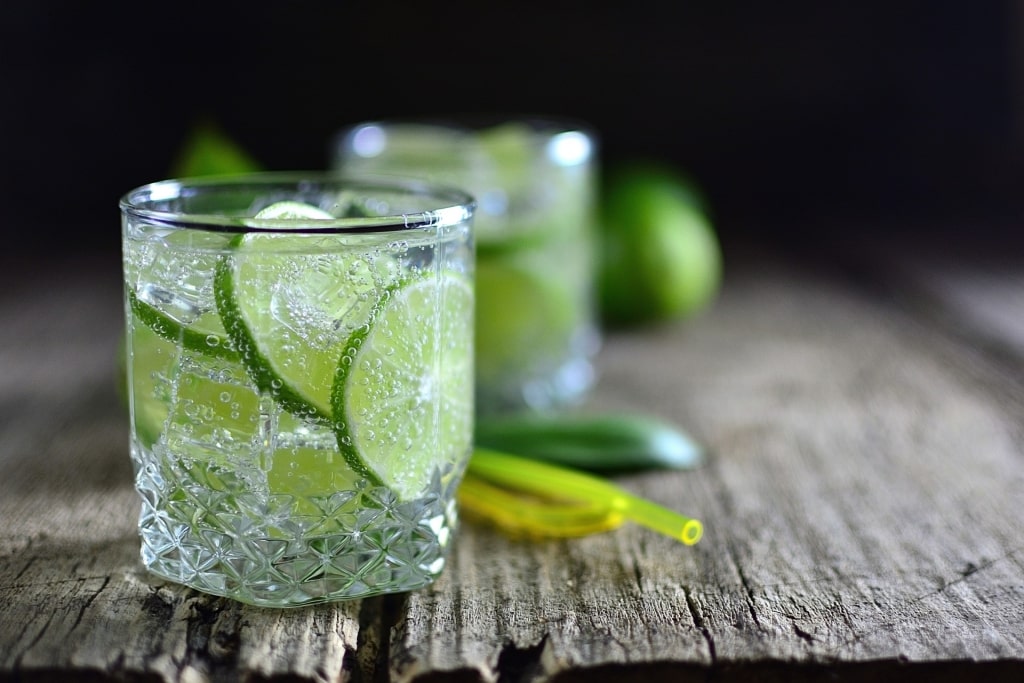
Awa di lamunchi
For a non-alcoholic cool-down that picks you up, try awa di lamunchi, which in Papiamento means “lime water.”
Limes are an essential ingredient in Caribbean cuisine. The popular limeade consists of the juice of fresh-squeezed limes, sugar, and water.
The refrigerated drink, served over ice, is especially welcome on warm days. You can order awa di lamunchi at most cafés and from vendors.
Kadushi
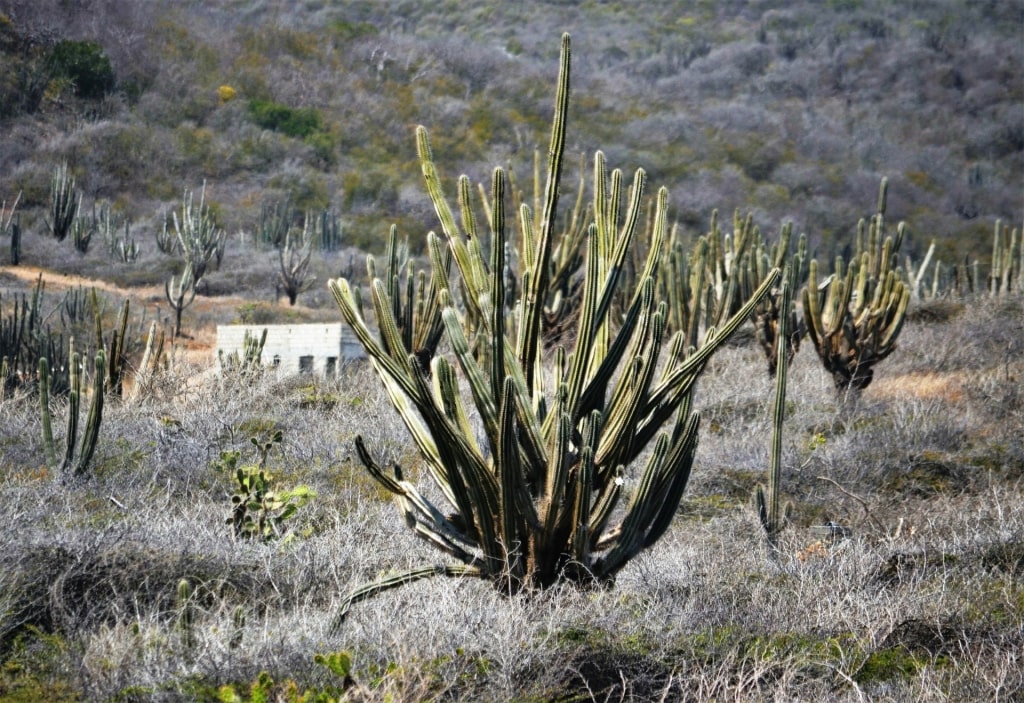
Kadushi cactus
You’ve likely seen the tall spiky kadushi cactus, also known as candle cactus, growing in Curaçao’s countryside. Locals make cactus soup from the plant by removing the prickly needles or spines and the cactus’ skin.
The meat is pounded, boiled, and stirred. Some recipes add salted beef, shrimp, or clams. Among the places to find the soup, a traditional Curaçao food, is Plasa Bieu, also called Marshe Bieu, in Willemstad.
Letter di Pinda
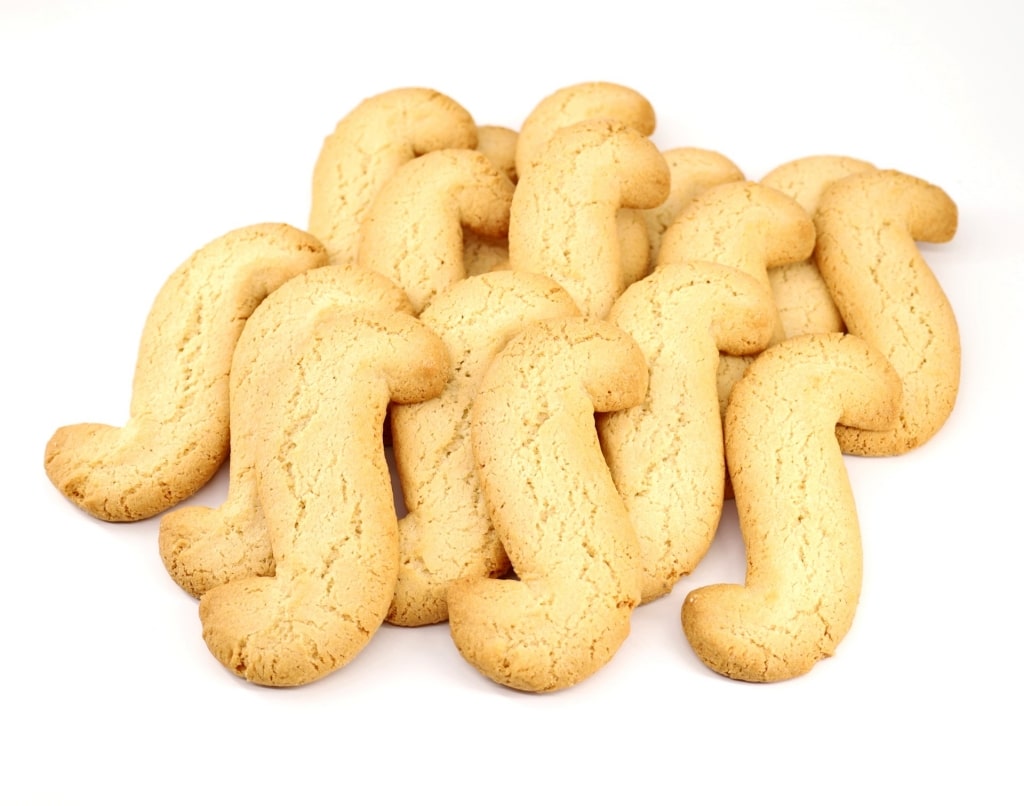
Letter di pinda
Popular in Curaçao and sister islands Aruba and Bonaire, letter di pinda are “S” shaped cookies made with ground peanuts. Some devotees think that the “S” shape contributes crunch to the cookie since the dough is likely to bake more evenly without square edges.
Others link the name to Seu, an Easter Monday Curaçao harvest celebration. Look for these tasty cookies in supermarkets and bakeries.
Read: Curaçao vs. Aruba: Which Should You Visit?
Yuana Stoba
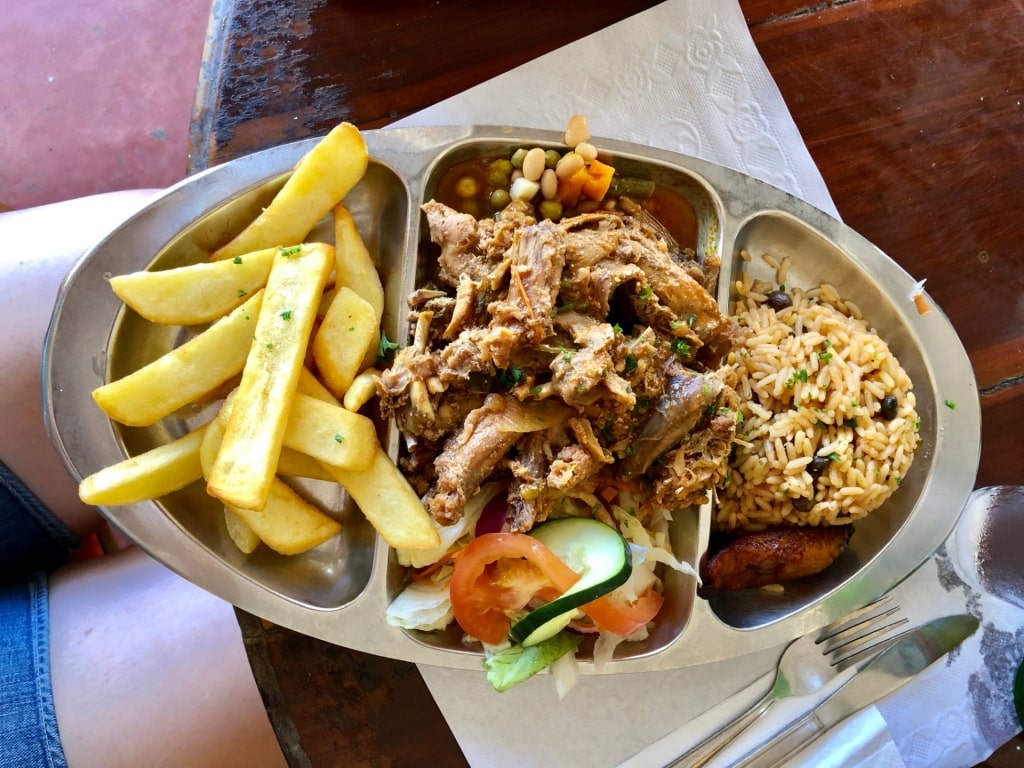
Yuana stoba
Curaçaoans use what grows, flies, and roams their land. That includes iguanas. Most often, when the ubiquitous lizard appears as an entrée, it’s as yuana stoba, iguana stew. Some trace the origin of the dish to Guyana.
Although recipes vary, most include, along with the lizard, onions, garlic, green peppers, and, often, potatoes. Locals say the meat tastes like chicken. One place to sample yuana stoba is Jaanchie’s Restaurant in Westpunt.
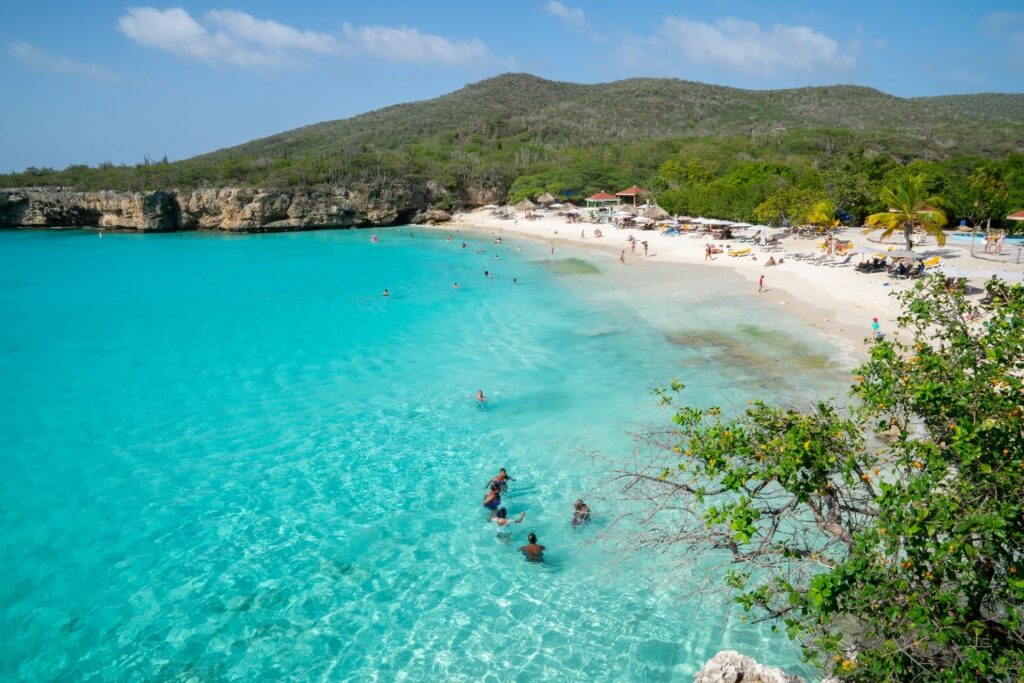
Knip Beach
Experience authentic Curaçaoan cuisine on a cruise to Curaçao. Browse Celebrity’s itineraries and explore a tempting variety of Caribbean cruise itineraries.
